LDC attendance hits new record in Q3 2019 according to latest DET report

The total number of children attending long day care (LDC) services in the three months ended September 2019 reached a new record according to the latest release of the Department of Education’s Child Care in Australia Report.
The report, which is issued quarterly and aims to capture the key trends in play across the early childhood education and care (ECEC) sector, also confirmed that total entitlements paid comfortably exceeded $2bn for the first time in a quarter, a large jump in children receiving additional child care subsidy (ACCS) and an increase in LDC fees of 5.1 per cent.
LDC sees children enrolled and family usage increase to new highs, as does OSHC
The number of children enrolled in an LDC service in the three months ended September 2019 was 781,830, up 4.0 per cent on the same period last year and 1.5 per cent higher than the previous record attendance recorded in Q4 2018.
The increase in children’s attendance was coupled with an increase in family usage, with the total number of families whose children attend a LDC service also comfortably surpassing previous high water marks.
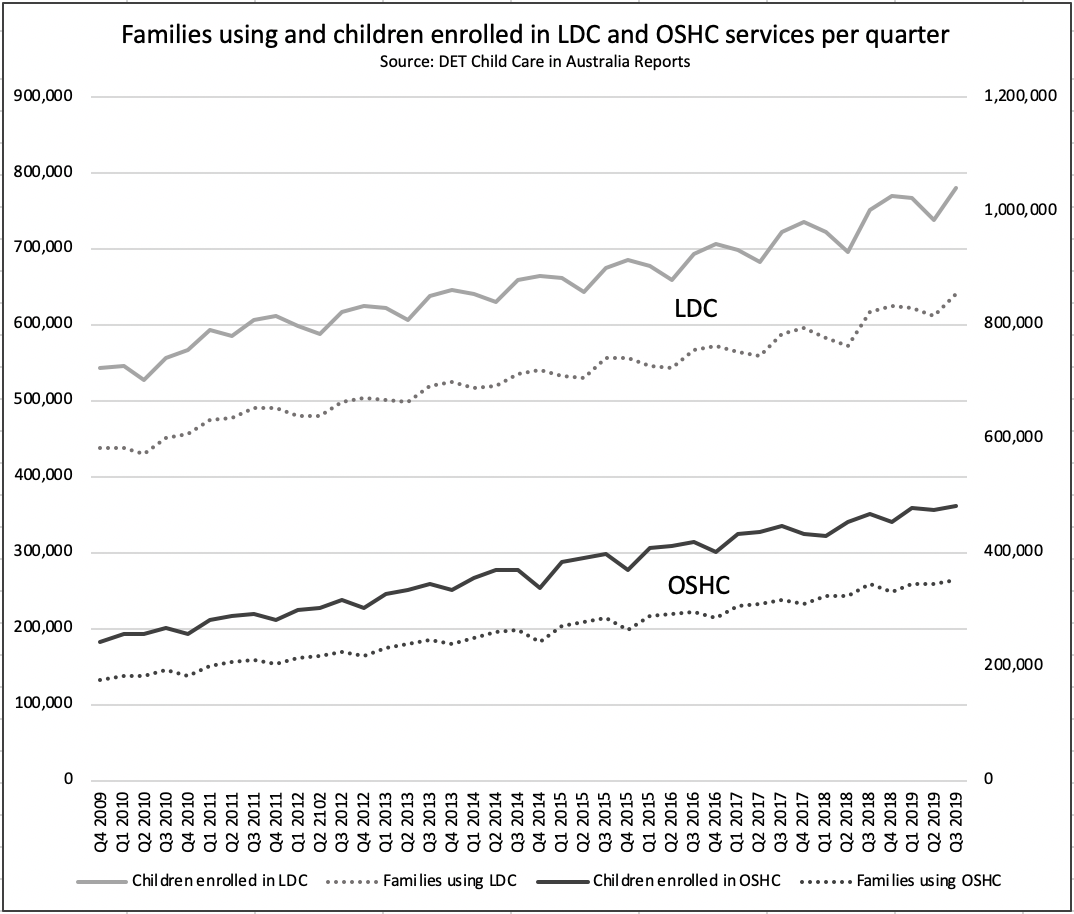
Notably, LDC attendance has increased by 86,550 or 12.5 per cent in the 15 months since the introduction of the CCS in July 2018, compared to a decrease in LDC attendance of 0.7 per cent in the 15 months prior to the introduction of the CCS.
The new records were also evident in the outside school hours care (OSHC) setting, although the extent of the improvement was more muted as have been the improvements since the introduction of the CCS.
Total quarterly spend on CCS and ACCS combined jumps to $2.2bn in Q3 2010
The combined total entitlements disbursed by Government in the form of CCS and ACCS reached the highest level on record at $2.2 billion, an increase of 12.1 per cent versus last year.
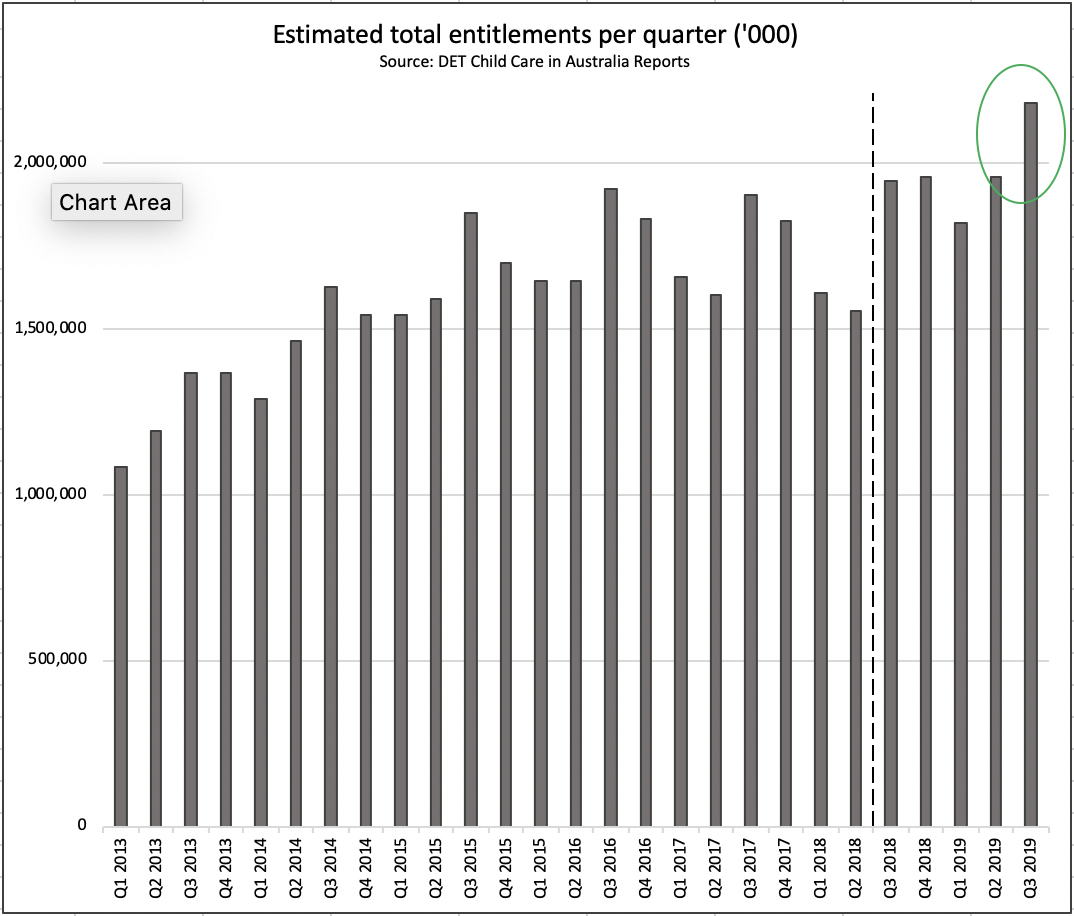
Of the $2.2 billion spent, $2.17 billion or 99 per cent was allocated to CCS, and within the CCS segment, 80 per cent or around $1.74 billion was spent in the LDC’s.
Family day care (FDC) and OSHC each received around $0.21 billion which represents around 10 per cent of CCS respectively.
The overall amount allocated to ACCS was relatively small at around $0.02 billion (about $20 million) with ACCS making up 1 per cent of all entitlements.
ACCS $ amounts low but number of children accessing continues to rise
Although the dollar amount of ACCS related entitlements are low relative to the CCS, the number of children access ACCS continues to rise driven largely by the child well being category which saw another big jump in the quarter.
The other three categories namely, grandparent, temporary financial hardship and transition to work showed no change or were slightly down on the previous quarter.
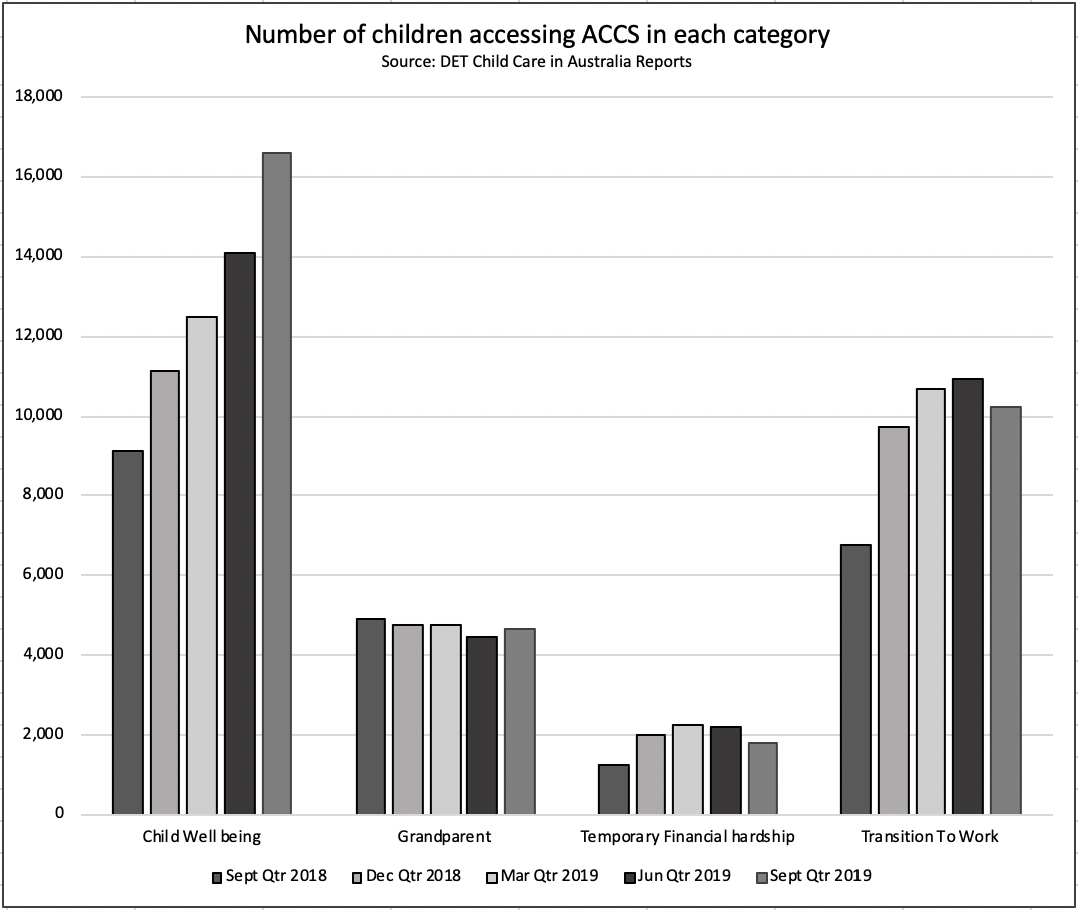
Although, due to changes in data presentation methodology by the Department of Education, an immediate comparison of post CCS implementation ACCS numbers versus pre CCS implementation SCCB (special child care subsidy) is not straightforward, if one was to combine the child wellbeing and temporary financial hardship categories under the CCS and then compare it to the pre CCS equivalent data an insight into the current levels of ACCS can be made.
It is clear that after a severe contraction in the number of children receiving child care wellbeing and temporary financial hardship related ACCS post CCS being introduced the growth since then has been strong enough to take the overall receipt of ACCS in these two categories combined to levels not seen in the last four years.
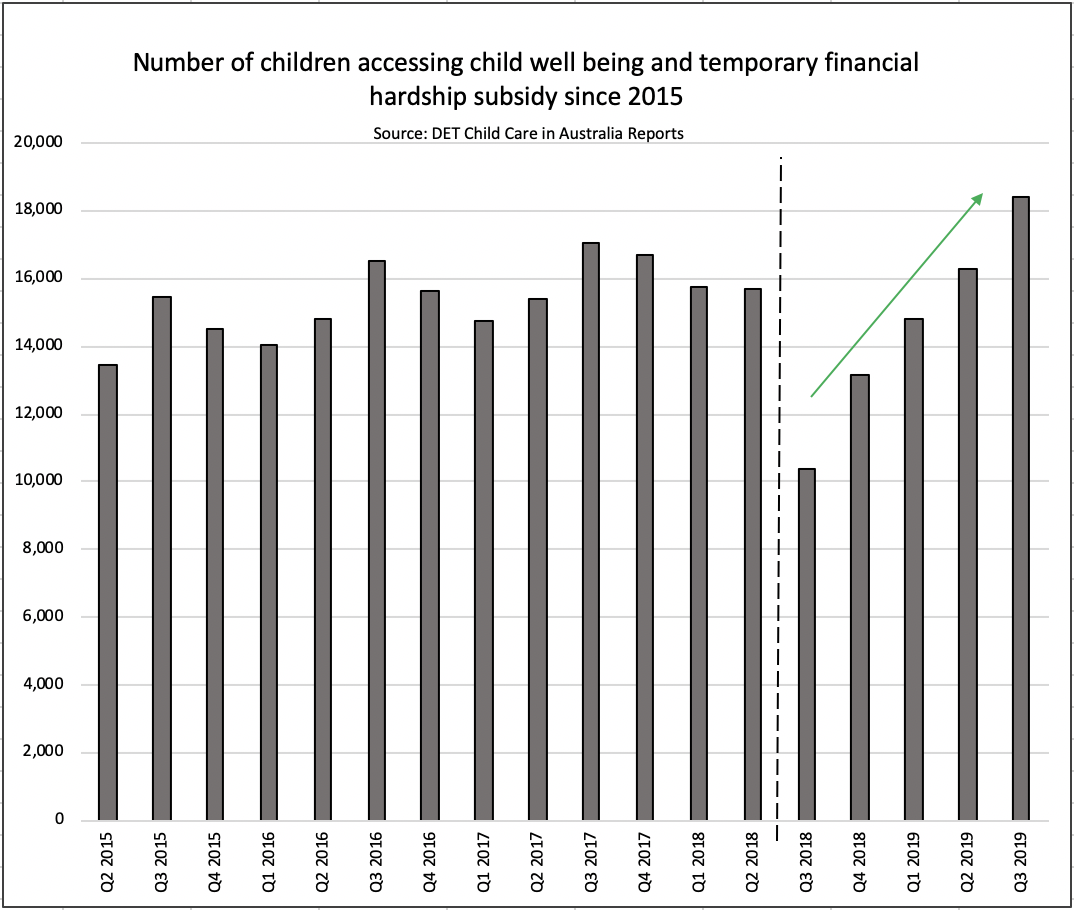
Interestingly the main casualty in the ACCS space has been grandparent related, with the number of families accessing this type of subsidy falling by around 47 per cent from the highest levels recorded in 2017.
LDC fees play catch up after modest Q2 topping 5% for first time since 2016
Fees in LDC centres rose 5.1 per cent compared to the same period last year, an increase of around $0.5 per hour, which marked the first time the 5.0 per cent level had been breached since Q4 2016.
The average hourly cost of care in an LDC services is now $10.30 per hour which is around 15 per cent lower than the current CCS fee cap of $11.98 per hour.
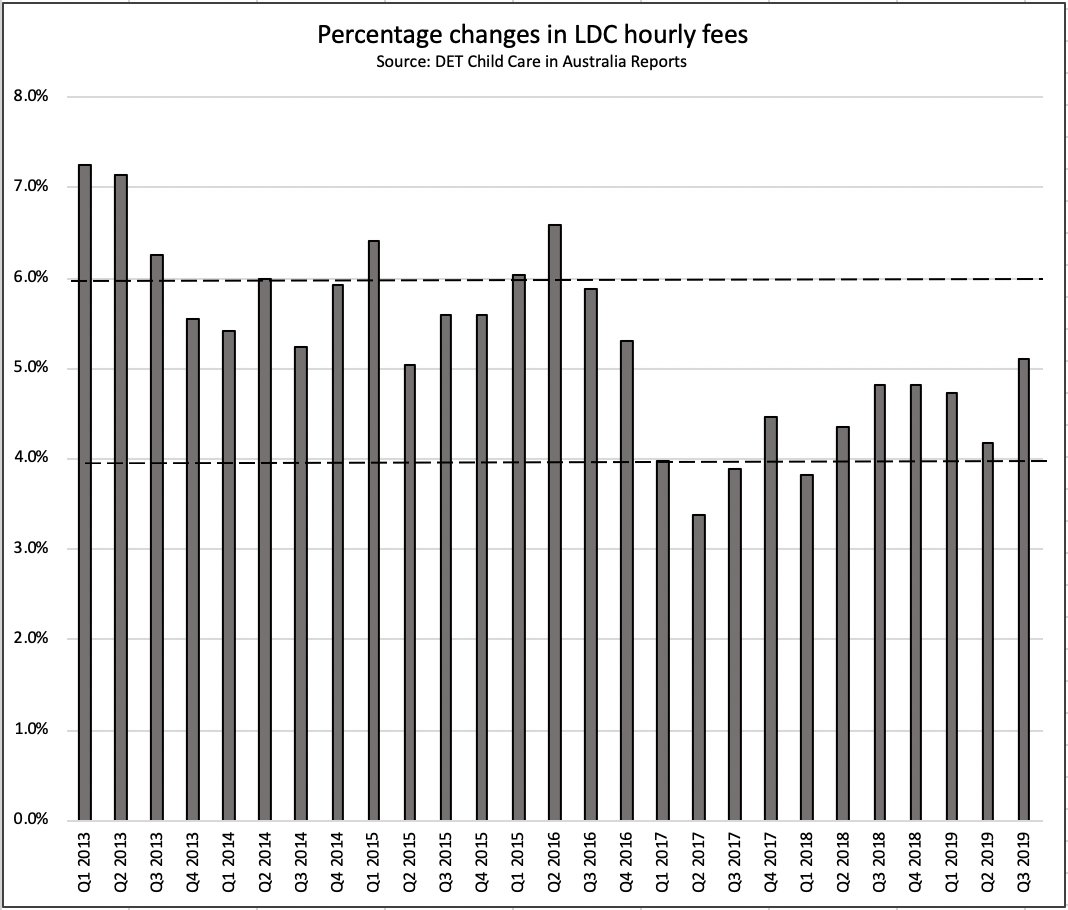
Notably, the Department reported that around 13 per cent of all LDC centres are charging hourly fees above the $11.98 fee cap, a level that has been broadly maintained since the data was included in the reports.
Family day care fees rose 4.0 per cent year on year, ending a streak of very strong price rises of over 14 per cent per quarter since CCS implementation and OSHC fees rose 0.7 per cent year one year, a relatively modest rise.
Popular

Practice
Provider
Quality
Research
Workforce
New activity booklet supports everyday conversations to keep children safe
2025-07-10 09:00:16
by Fiona Alston

Quality
Practice
Provider
Research
Workforce
Honouring the quiet magic of early childhood
2025-07-11 09:15:00
by Fiona Alston

Quality
Practice
Provider
Workforce
Reclaiming Joy: Why connection, curiosity and care still matter in early childhood education
2025-07-09 10:00:07
by Fiona Alston













